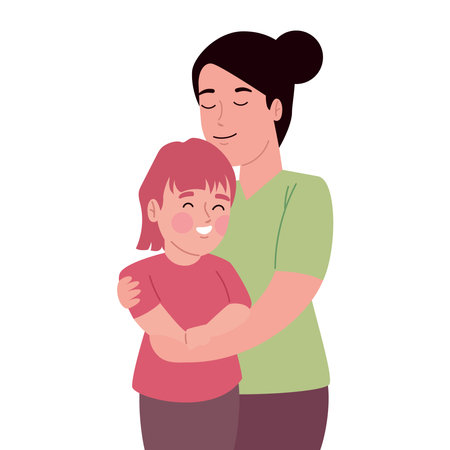Introduction: The New Landscape of Nursery Provision
The COVID-19 pandemic has had a profound impact on nursery provision across the UK, fundamentally changing how early years care and education are delivered. For parents, these shifts have brought both challenges and new opportunities when it comes to choosing childcare. Nurseries have had to adapt swiftly to government guidelines, increased hygiene measures, and fluctuating attendance patterns. Many have introduced smaller class “bubbles”, implemented stricter cleaning routines, and offered flexible drop-off and pick-up times to minimise contact between families. In some cases, digital solutions such as virtual tours and online parent meetings have replaced traditional face-to-face interactions. These changes are not just short-term fixes but are shaping a new norm in early years settings. As a result, parents now need to consider a wider range of factors when selecting a nursery, from health protocols and staff training to communication methods and contingency plans for potential closures. Understanding this evolving landscape is essential for making informed decisions about your child’s care and early development in a post-pandemic world.
Health and Safety: Enhanced Measures and Everyday Practices
The COVID-19 pandemic has brought about a significant overhaul in health and safety protocols within UK nurseries. Parents will notice that many of the new routines, once considered temporary, have now become part of everyday nursery life. These changes are designed to reduce the risk of infection while ensuring children continue to enjoy a stimulating and safe environment.
Key Safety Protocols Implemented
Nurseries across the UK have adopted stringent safety measures, often exceeding government guidelines to reassure parents and staff. The following table highlights some of the standard practices now in place:
| Measure | Description | Impact on Children & Staff |
|---|---|---|
| Enhanced Cleaning Routines | Frequent disinfection of toys, surfaces, and high-touch areas throughout the day. | Reduces risk of transmission; requires more time from staff for cleaning duties. |
| Social Distancing Policies | Limiting group sizes, staggered drop-off/pick-up times, minimising contact between different bubbles. | May affect social interaction; provides safer environment but can be challenging for young children. |
| Hand Hygiene Protocols | Mandatory handwashing upon arrival, before/after meals, and after outdoor play. | Promotes good hygiene habits; increased supervision needed for younger children. |
| PPE for Staff | Masks or visors worn by staff during close contact activities or when required by local guidance. | May seem unfamiliar to children; reassures parents but can impact communication. |
| Regular Symptom Monitoring | Daily temperature checks and clear policies on illness-related absence for both staff and children. | Aims to prevent outbreaks; may lead to more frequent absences as a precaution. |
How These Measures Affect Daily Nursery Life
While these enhanced protocols provide peace of mind, they also influence the daily rhythms at nursery. Drop-off and pick-up routines are more structured, with one-way systems and designated entry points now commonplace. Children are encouraged to play in smaller groups or ‘pods’, which limits exposure but can affect friendships across age groups. Staff report spending more time on cleaning and monitoring health than ever before, which can impact their ability to focus solely on learning activities. Nevertheless, most nurseries have adapted well, introducing creative ways to maintain a warm and welcoming atmosphere despite these constraints.

Access and Availability: Changes in Opening Hours and Places
The COVID-19 pandemic brought about significant shifts in how nurseries across the UK operate, with many settings forced to re-evaluate their opening hours, capacity limits, and enrolment processes. As government guidance evolved and local restrictions changed, nurseries had to respond quickly to ensure both safety and continued access for families.
Adjustments in Opening Hours
One of the most noticeable changes for parents has been the adjustment of nursery opening hours. Some settings reduced their hours to allow for deep cleaning between sessions or to accommodate staggered drop-off and pick-up times. This meant that families needed to plan their daily routines differently, often balancing work commitments with shorter nursery days. While some nurseries have since returned to pre-pandemic hours, others have maintained these new schedules as they found them beneficial for managing staff workload and child group bubbles.
Capacity Limits and Group Bubbles
To comply with social distancing guidelines, nurseries introduced smaller group sizes or ‘bubbles’, limiting the number of children in each room. This inevitably impacted overall capacity, making it more challenging for some families to secure a place. Waiting lists became longer, particularly in areas where demand for childcare was already high. Nurseries also spaced out activities and reorganised rooms to reduce close contact among children and staff.
Enrolment Processes Go Digital
The process of enrolling children into nursery has also seen a digital transformation. Many providers moved applications and tours online, offering virtual viewings rather than traditional open days. Paperwork is now commonly completed via email or secure online portals. For parents, this shift has streamlined some aspects of enrolment but can feel less personal compared to face-to-face interactions.
What Parents Should Consider
If you are looking for a nursery place post-pandemic, it’s important to check current opening hours and ask about any ongoing capacity restrictions. Enquire whether there are waiting lists and understand how your chosen nursery manages group sizes and hygiene protocols. Additionally, be prepared for digital-first enrolment processes—while efficient, it may require more proactive communication from parents.
4. Financial Implications for Parents
The COVID-19 pandemic has had a significant effect on nursery provision costs and the financial landscape for parents across the UK. Many families have felt the pinch as nurseries adapted to new safety protocols, leading to changes in fee structures and increased operational costs. Understanding how these shifts impact your household budget is crucial when planning childcare arrangements.
Changes in Nursery Fees
During the pandemic, some nurseries faced reduced occupancy and higher cleaning expenses, which led to adjustments in their fee policies. While a few providers offered temporary discounts or held fees steady during lockdowns, others introduced fee increases to cover additional staffing and health measures. The table below summarises typical changes parents might have seen:
| Fee Change | Description | Typical Scenario |
|---|---|---|
| Temporary Reductions | Discounted rates or waivers during closures | Lockdown periods with no physical attendance |
| Fee Increases | Higher charges to offset increased operational costs | Enhanced cleaning, PPE, staff-to-child ratios |
| No Change/Freeze | Fees held at pre-pandemic levels | Nurseries with stable funding or support |
Funding Options and Government Support
The UK government recognises the burden on families and has maintained several schemes to assist with nursery costs. Key options include:
- 15 or 30 Hours Free Childcare: Eligible parents of 3- and 4-year-olds can access up to 30 hours of free childcare per week during term time, though the specifics may vary by local authority.
- Tax-Free Childcare: For every £8 paid into an online account, the government adds £2, up to £2,000 per year per child.
- Universal Credit for Childcare: Low-income families may claim back up to 85% of eligible childcare costs, subject to limits.
- Childcare Vouchers (Closed to New Applicants): Some parents still benefit from this salary sacrifice scheme if joined before October 2018.
Pandemic-Related Changes to Assistance
The government temporarily relaxed certain eligibility criteria for funded hours during periods of disruption, allowing more flexibility for parents who lost work or changed employment status due to COVID-19. However, many emergency measures have now ended, so it’s important for families to check current rules and apply early for available support.
Navigating Your Options Post-COVID-19
The financial implications of nursery care post-pandemic mean parents should carefully compare fees, check eligibility for all forms of government assistance, and discuss payment plans or hardship support directly with providers if needed. Staying informed about both national and local council policies will help ensure you get the best value while securing quality care for your child.
5. Adapting to New Learning Approaches
The pandemic has compelled nurseries across the UK to rethink their approach to early years education. One of the most significant changes has been the shift towards flexible and adaptive learning plans that accommodate both in-person and remote engagement. Many nurseries have invested in digital resources, such as interactive story time sessions, virtual show-and-tell, and online activity packs, ensuring that children who need to stay at home are not left behind.
Embracing Digital Tools
Nurseries quickly adopted new technologies to maintain continuity in learning. Platforms like Zoom and Microsoft Teams became commonplace for group activities, singalongs, and even parent-teacher meetings. These digital tools have made it easier for parents to stay involved in their child’s development while enabling teachers to monitor progress remotely.
Changes in Daily Routines
Learning plans have become more structured around smaller groups or “bubbles”, focusing on outdoor activities and hands-on learning within safe environments. There has also been a greater emphasis on hygiene routines, which has been subtly integrated into daily lessons, helping children understand the importance of personal care through play-based approaches.
Implications for Child Development
The move towards blended learning models has had mixed implications for child development. On one hand, increased parental involvement through home-based activities has supported language and social skills growth. On the other hand, experts caution that too much screen time and reduced physical interaction with peers can impact socialisation and emotional development. Nurseries are therefore striving to strike a balance by offering a variety of activities—both online and offline—to cater for different needs and preferences.
Ultimately, these adaptations mean that parents now need to be more engaged with their child’s nursery experience than ever before. By staying informed about new learning approaches and understanding how technology is being used, parents can help ensure their child continues to thrive during these unprecedented times.
6. Communication with Parents: What’s Changed?
The COVID-19 pandemic has transformed the way nurseries across the UK interact and communicate with parents. Gone are the days when you could simply pop into the nursery at pick-up time for a quick chat with your child’s key worker. Now, nurseries have adopted more structured and, crucially, safer methods to keep parents in the loop while minimising unnecessary contact.
Digital Updates and Apps
Many nurseries have embraced digital platforms to provide regular updates on children’s progress. Apps and secure online portals allow staff to share photos, daily activity logs, and developmental milestones directly with parents. This means you’ll receive real-time information about your child’s day, from what they ate for lunch to the activities they enjoyed. It’s a far cry from the handwritten notes of pre-pandemic times and offers greater transparency for busy families.
Virtual Meetings
Face-to-face meetings have largely been replaced by video calls or phone appointments. Whether it’s a settling-in review or a discussion about your child’s development, expect these conversations to happen via Zoom, Teams, or similar platforms. While this may lack some of the personal touch, it does offer flexibility for working parents and ensures that important discussions aren’t delayed by illness or restrictions.
What Parents Should Expect Now
Parents should be prepared for less spontaneous interaction but more structured communication overall. Newsletters, emails, and app notifications will often be the main way nurseries share policy changes or upcoming events. If you have concerns or need to discuss something specific, you may need to book an appointment rather than catching staff at drop-off or pick-up. Most settings are now very clear about their protocols, so don’t hesitate to ask how best to get in touch if you need support or reassurance.
Final Thoughts
The shift to digital-first communication was driven by necessity during COVID-19 but has stayed due to its convenience and efficiency. While it can feel less personal at times, most UK nurseries are working hard to ensure parents remain informed and involved in their child’s early years journey—even if it looks a little different than before.


